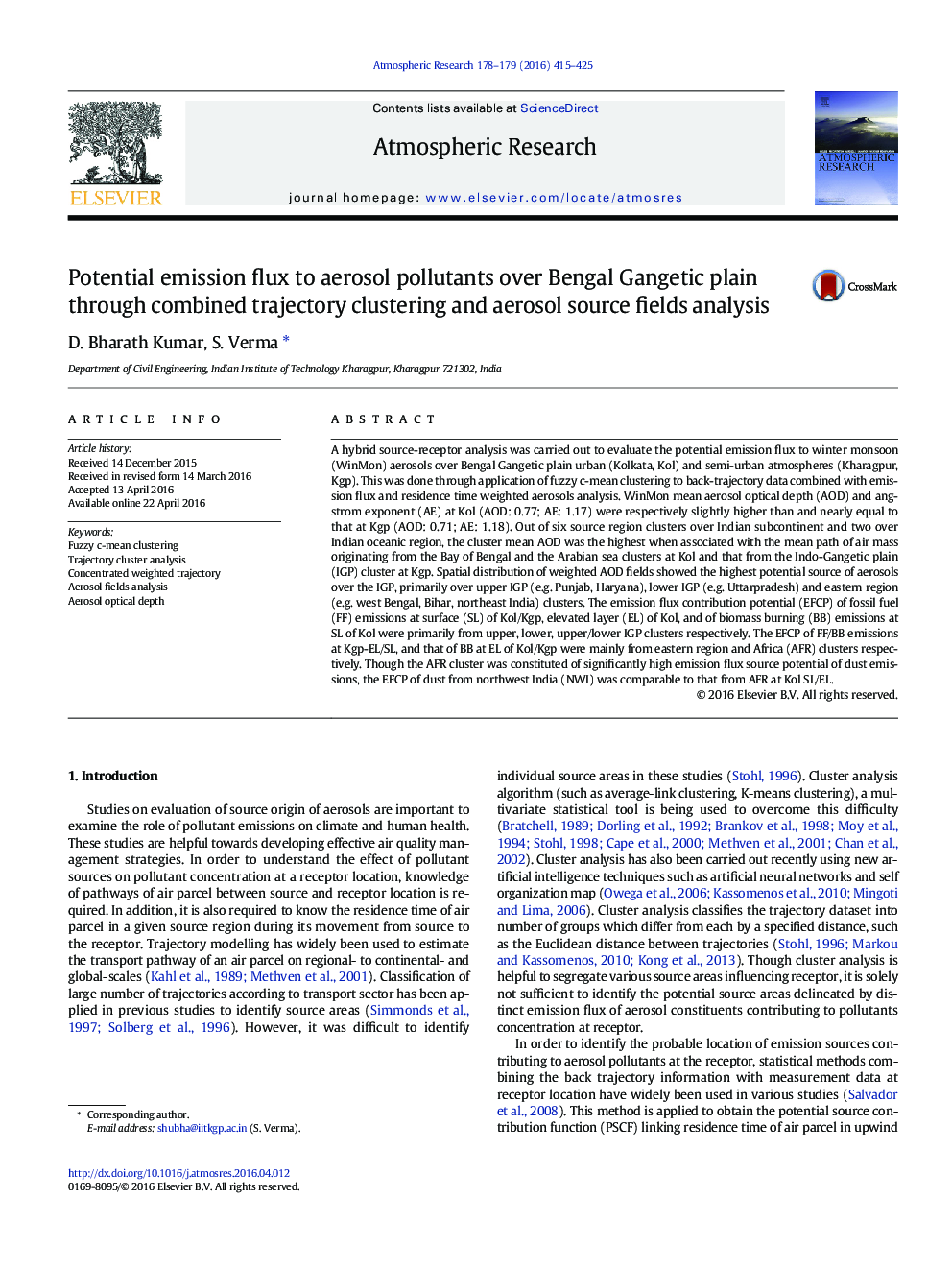| Article ID | Journal | Published Year | Pages | File Type |
|---|---|---|---|---|
| 6343030 | Atmospheric Research | 2016 | 11 Pages |
Abstract
A hybrid source-receptor analysis was carried out to evaluate the potential emission flux to winter monsoon (WinMon) aerosols over Bengal Gangetic plain urban (Kolkata, Kol) and semi-urban atmospheres (Kharagpur, Kgp). This was done through application of fuzzy c-mean clustering to back-trajectory data combined with emission flux and residence time weighted aerosols analysis. WinMon mean aerosol optical depth (AOD) and angstrom exponent (AE) at Kol (AOD: 0.77; AE: 1.17) were respectively slightly higher than and nearly equal to that at Kgp (AOD: 0.71; AE: 1.18). Out of six source region clusters over Indian subcontinent and two over Indian oceanic region, the cluster mean AOD was the highest when associated with the mean path of air mass originating from the Bay of Bengal and the Arabian sea clusters at Kol and that from the Indo-Gangetic plain (IGP) cluster at Kgp. Spatial distribution of weighted AOD fields showed the highest potential source of aerosols over the IGP, primarily over upper IGP (e.g. Punjab, Haryana), lower IGP (e.g. Uttarpradesh) and eastern region (e.g. west Bengal, Bihar, northeast India) clusters. The emission flux contribution potential (EFCP) of fossil fuel (FF) emissions at surface (SL) of Kol/Kgp, elevated layer (EL) of Kol, and of biomass burning (BB) emissions at SL of Kol were primarily from upper, lower, upper/lower IGP clusters respectively. The EFCP of FF/BB emissions at Kgp-EL/SL, and that of BB at EL of Kol/Kgp were mainly from eastern region and Africa (AFR) clusters respectively. Though the AFR cluster was constituted of significantly high emission flux source potential of dust emissions, the EFCP of dust from northwest India (NWI) was comparable to that from AFR at Kol SL/EL.
Related Topics
Physical Sciences and Engineering
Earth and Planetary Sciences
Atmospheric Science
Authors
D. Bharath Kumar, S. Verma,
